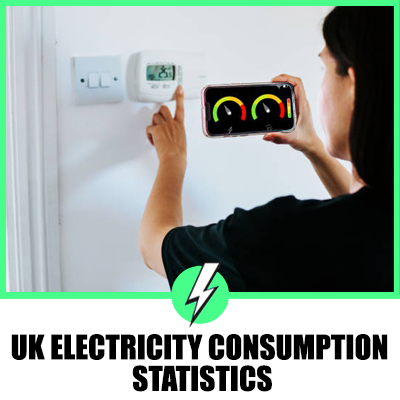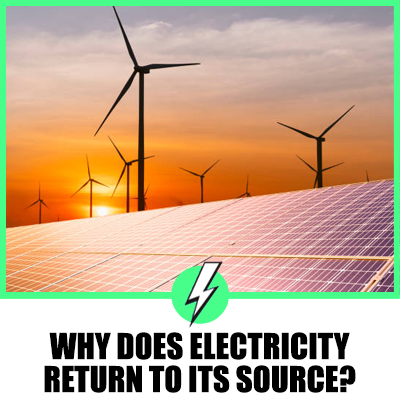UK Electricity Consumption Statistics
Is the amount of electricity you consume at the forefront of your mind?
We look at renewable energy sources, independent of external influences affecting the energy supply will, electricity consumption ever return to previous levels.
Let’s examine UK electricity statistics.

Contents
Key Highlights
- Energy Supply is expected to generate £50.56 billion in revenue in 2023.
- It is anticipated that annual growth will be 5.06%. (CAGR 2023-2027).
- British Gas has 20% of market share, while E.ON came in second with a market share of 17%.
- In terms of income, the market for renewable electricity generation will be worth £8.5 billion in 2023.
- In 2023, the market for renewable electricity generation is expected to grow by 13.4%.
Monthly electricity consumption in the United Kingdom
In November 2022, electricity consumption in the UK amounted to 24.3 terawatt-hours, down from 26.4 a year earlier, an 8.6% difference.
Electricity demand
Google searches for electricity demand over five years have decreased by 52.38%
Despite a population increase of about five million throughout this time, the UK’s electricity usage has decreased.
Yet, predictions indicate that this tendency won’t continue.
While electrification paves the path for the decarbonisation of the energy supply, electricity consumption in the UK is predicted to rise steadily until 2040.
Information source Statista Ibis World Google Trends
Mean domestic electricity consumption per household in Great Britain
East of England has had the nation’s highest average home electricity use.
This translated into 4,075 kilowatt-hours per home.
In contrast, the average household consumption in the North East of England was the lowest at 3,165 kilowatt hours, a negative of 22.3%.
Electricity consumption in the United Kingdom (UK) from 1970 to 2021 by final user (in terawatt-hours)
The largest energy end users in the UK during the past ten years have consistently been households.
Around 109 terawatt-hours, about 38% of global consumption, of energy were used by households in the UK in 2021.
The amount of electricity consumed by the industrial sector has decreased, going from 117 terawatt-hours in 2005 to 85 terawatt hours in 2021, a negative 27%.
Information source Statista
Electricity demand is projected to grow
Natural gas and petroleum products are anticipated to be the primary sources of final energy consumption in the United Kingdom for the next 20 years (UK).
The demand for natural gas is anticipated to increase from a low of 36 million tons in 2025 to a high of 45.9 million tons of oil equivalent by 2040.
Between 2021 and 2040, the final consumption of electricity in the UK is predicted to increase by 37%, surpassing petroleum products towards the end of the time frame.
Electricity usage by sector
The domestic sector represents 175% usage of all the sectors combined.
What’s the average bill spend for electricity?
| Electricity usage | Average annual consumption | Average annual cost | Average monthly cost |
| Low (flat or 1-bedroom house / 1-2 people) | 1,800 kWh | £781.87 | £65.16 |
| Medium (3-bedroom house / 2-3 | 2,900 kWh | £1,156.27 | £96.36 |
| High (5-bedroom house / 4-5 people) | 4,300 kWh | £1,632.79 | £136.07 |
*The Government’s Energy Price Guarantee rates of 34.037p per kWh plus a standing charge of 46.356p per day for electricity and 10.330p per kWh plus the standing charge of 28.485p for gas. Rates and standing charges are averages and will vary by region, payment method and meter type. These rates are effective from 1st January 2023. You could be paying more or less for your energy per kWh, and your standing charge could be different if you’re on a fixed rate tariff.
Information source Ofgem
Industry revenue of “electric power generation and distribution“ in the United Kingdom from 2012 to 2025 (in billion U.S. Dollars)
This statistic presents the financial performance of the UK sector of “electric power generation, transmission and distribution” from 2012 to 2019 with projections through 2025.
In the United Kingdom, the revenue from electric power generation, transmission, and distribution is anticipated to total about £73.46 billion by 2025.
Information source Statista
Where does your electricity come from
The electricity created by wind is higher by 32% than the traditional use of gas to create electricity and 157% higher than using nuclear facilities to create electricity.
Information source National Grid ESO
The largest retailer of power in the United Kingdom is British Gas.
Despite a noticeable reduction over time, it still held 20% of the market in the first three quarters of 2022.
With a market share of 17% during the same era, E.ON lagged behind closely.
Npower was acquired by E.ON, creating the big 5.
Information source Statista
Renewable energy
In the five years from February 2018 to January 2023, Google searches indicate a 48% increase in interest in renewable energy.
Information source Google Trends
Renewable energy sources
In the United Kingdom, the total percentage of renewable energy generation was 55%, an increase of 3.8% from the year before.
Onshore and offshore wind power account for 55% of the market, the largest share. Bioenergy came in second with 10.4%, and solar energy came in third with 3.9%.
Information source Green Match
Heat pumps
Over the past 12 months, Google searches for heat pumps have increased by 22.7%.
While not very new regarding technology or availability, the UK’s heat pump sector is still quite young and underdeveloped, with only 30–35,000 units installed.
As part of the government’s strategy to decarbonise heat and cut building emissions, this is expected to change drastically over the next several years.
The government is aiming for 600,000 heat pump installations annually by 2028.
Information source PwC
Energy price guarantee
With the energy price guarantee ending in April, Google searches show interest from September 2022 to February 2023 after a peak in searches. The trends have decreased by 44%.
When the Energy Price Guarantee expires in April 2023, there will be another increase in energy prices in the UK. This will increase to £3,000 per year (up from £2,500) and is based on an average household’s usage.
Information source Google Trends All Seasons Energy
Conclusion
There is still uncertainty in the UK electricity market. With the price guarantee ending in April 2023, the coming wither months through the end of the year and into 2024 will be higher if the winter.
Heat pumps are an exciting prospect for lower electricity bills. Eligible families can obtain funding through the Boiler Upgrade Scheme, where they can apply for a grant worth up to £5,000 to install an air source heat pump system.
The investment is a component of the £3.9 billion financing package for the Heat and Buildings Plan, which is intended to lower UK carbon emissions. It is anticipated that the Boiler Upgrade Program will last until April 2025.





